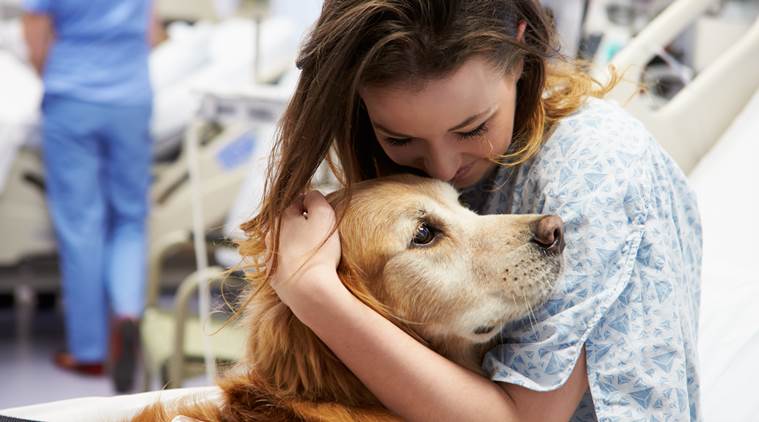 Some 30 years ago, Psychologist Alan Beck of Purdue University and psychiatrist Aaron Katcher of the University of Pennsylvania found that petting a dog brings about healthy changes in the body. (Source: Getty/Thinkstock)
Some 30 years ago, Psychologist Alan Beck of Purdue University and psychiatrist Aaron Katcher of the University of Pennsylvania found that petting a dog brings about healthy changes in the body. (Source: Getty/Thinkstock)
The current times are difficult, especially for the healthcare staff who are having to expose themselves to the virus and treat patients every single day. Across the world, doctors, nurses and other healthcare professionals are going about their duties, day after day, so that people get better and find the strength to get back to normal life. All while dealing with a lot of stress themselves.
Now, here is a piece of good news. A study has revealed that therapy dogs can lower/help manage the immense stress that doctors and nurses working in emergency departments are facing currently.
ALSO READ | Six simple ways health workers can beat stress
According to the 122-participant study, published in the journal Academic Emergency Medicine, while little hard data exists to scientifically evaluate it, many healthcare workers believe “dog-assisted support can improve emotional well-being in the healthcare setting”, the study’s lead author Jeffrey A Kline of the Indiana University, US, was quoted as saying.
For the research, emergency providers had a five-minute interaction with a therapy dog and a handler. It was observed that these emergency providers had a significant reduction in “self-reported” anxiety, as opposed to those patients who coloured mandalas using colour pencils for the same duration.
It was also found that after the interaction, at the end of their shift, emergency providers had a lower salivary cortisol (a stress hormone). Kline was quoted as saying that while emergency care providers did enjoy seeing a dog while on their shift, it is still not clear if and to what extent the benefit received was from the dog, the handler, or the combination of the two.
Some 30 years ago, Psychologist Alan Beck of Purdue University and psychiatrist Aaron Katcher of the University of Pennsylvania found that petting a dog brings about the following changes in the body: blood pressure gets normal, heart rate slows down, muscle tension relaxes, breathing becomes regular, etc. These are all signs of reduced stress.